I am trying to make a DMX splitter. Everything works now, but it would be somewhat useful to have notification LEDs, like in the example below.
For the input I could use one LED, which I either connect to the RS485 + or -. Which one does not matter, because if a DMX cable is connected the LED lights up.
However, for the outputs it does not matter if a DMX connector is attached, the LED always is on (because there is signal on the input going to the output).
How could I make a red/green or single color LED that would light up when an output connector is inserted to a DMX device?
(btw, for the input I used a transistor, to prevent a significant voltage drop from the real signal going to the LED).
I'm not asking to recreate it exactly, I just want to have a LED that lights/blinks when a signal is sent to a DMX output.
Update
I created a new question (Prototyping a DMX splitter, the schematics I copied here for completeness:
Circuit where the above is based upon (for the sake of this question there is no functional difference)
Credits to J. Mack.


